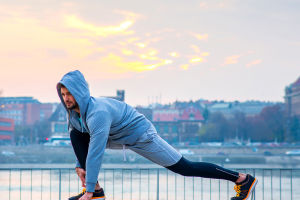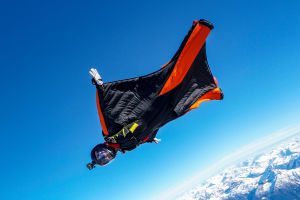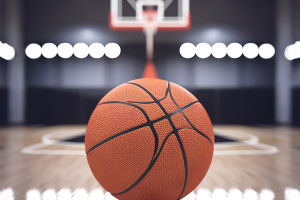
Snowboarding has become a highly popular activity in mountainous regions, attracting those seeking an adrenaline-filled experience.
For newcomers to the sport, the journey begins with two essential questions: How to learn snowboarding and which snowboard is ideal for beginners? Lykkers, this guide focuses on the second question, offering detailed advice on selecting the perfect snowboard to get started.
Understanding Key Snowboard Terms
Before delving into snowboard recommendations, it's important to understand some key terms used in the sport:
- Jibbing: Involves using features like rails and boxes to perform tricks.
- Freestyle: A style focusing on acrobatics, typically within a snowpark or halfpipe.
- Freeride: Riding on natural, unprepared terrains such as fresh snow or off-piste areas.
- Camber profiles: These describe the curvature of the snowboard.
- Convex Camber: The middle of the board is raised, while the ends dip downward.
- Rocker or Inverted Camber ("banana" shape): The middle contacts the snow while the ends are raised.
- Flat Camber: A flat board without significant curvature.
- Flex: Refers to the board’s rigidity or flexibility.
- Shape: The board’s design, which can either be directional (meant for one-way riding) or twin (symmetrical for both directions).
Types of Snowboards for Beginners
When starting with snowboarding, it’s essential to choose a board that suits your needs, ensuring both learning efficiency and comfort. Below are the main types of snowboards:
- All Mountain: Perfect for riders who wish to explore different terrains and conditions.
- Characteristics: Versatile, suitable for both groomed trails and off-piste riding.
- Freestyle: Ideal for those who enjoy snowparks and performing tricks.
- Characteristics: Typically shorter and more maneuverable, designed for acrobatics.
- Freeride: For those who enjoy venturing into untouched terrains.
- Characteristics: Longer, offering enhanced floatation in fresh snow and off-piste conditions.
- Twin: Symmetrical boards suited for riding both forward and backward, great for freestyle.
- Directional: Boards designed with an emphasis on downhill performance and freeride.
- Characteristics: Often asymmetrical, with a longer nose for better control.
For beginners, an All Mountain snowboard is the most recommended choice. This type offers the flexibility to learn on a variety of terrains and provides excellent stability. It allows newcomers to develop their skills while enjoying different aspects of snowboarding.
Choosing the Right Camber, Flex, and Shape
For those just starting, selecting the right camber, flex, and shape is key to a positive learning experience:
- Camber: A flat or slightly rocker camber is ideal for beginners. Flat camber offers stability, while rocker camber enhances maneuverability, especially when turning.
- Flex: A soft or medium flex is preferred for ease of control. This makes the board more forgiving, allowing beginners to learn faster.
- Shape: A Twin Shape is often the best choice for beginners due to its symmetry, making it easier to ride both forward and backward.
Once proficiency is gained, snowboarding enthusiasts may move on to more specialized boards depending on their style, such as choosing a stiffer board for freestyle or freeride use.
Matching Board Size to Your Height and Weight
Selecting the correct size of snowboard is essential for optimal performance. Board length impacts control, stability, and maneuverability on snow. Shorter boards provide more control and are easier to turn, while longer boards offer stability at high speeds.
Beginner riders should opt for a shorter board within their recommended weight and height range, which ensures easier maneuverability and quicker learning. It’s also essential to check the board's width to ensure that your boots do not overhang the edges, as this could affect control.
Considerations for Gender-Specific Snowboards
While not always strictly necessary, gender-specific snowboards tend to cater to different physical characteristics. Women’s boards often have a softer flex and are slightly shorter and narrower to match typical body proportions, enhancing maneuverability. However, the right choice ultimately depends on the rider’s preference and ability.
Selecting a Snowboard Based on Riding Style
Even as a beginner, you may already have a preferred riding style in mind, or you may evolve one as you practice. Those who love high-speed runs and challenging maneuvers may prefer a stiffer, more responsive board for better control and stability. On the other hand, if you enjoy more relaxed riding, such as carving smooth turns on groomed slopes, a softer board offers more fluidity.
For those interested in performing tricks and freestyle riding, a Twin-tip snowboard is an excellent choice. It allows for symmetrical movement and makes it easier to execute jumps and spins.
Final Tips for Choosing the Best Snowboard for Beginners
To summarize, for beginners, an All Mountain snowboard with a flat camber or slight rocker is a great starting point. A soft flex provides an easy learning curve, and a Twin shape offers flexibility for forward and backward riding.
Make sure to consult the manufacturer’s size charts to ensure that the length and width are suitable for your body size. Choosing the right snowboard tailored to your needs and preferences will enhance your snowboarding experience and make learning more enjoyable.


